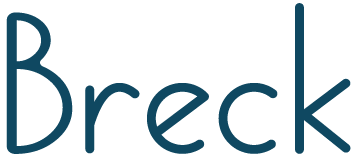
508 Compliance
508 Compliance: Beyond the Checklist
Today, nearly everyone is aware of the Americans with Disabilities Act, which prohibits discrimination of Americans with disabilities and requires accessibility to public spaces. Not as many people are aware that government websites, like public buildings, have their own accessibility requirements known as Section 508.
Even those who are aware of Section 508 requirements may not understand their full impact. Section 508 compliance is not just a simple checklist; it’s a commitment to accessibility that has a real impact on the public and all stakeholders. Contractors developing websites for the U.S. government are among those who must demonstrate a thorough understanding of Section 508 requirements.
What Is Section 508?
In 1998, Congress amended the existing Rehabilitation Act of 1973 to require that all federal agencies make their electronic and information technology accessible to both employees and members of the public who have disabilities. This need for accessibility impacts both website design and documents, including PDF and Word. This doesn’t mean separate websites or documents for those with disabilities; instead, the same website or document should be universally accessible.
Why Does Section 508 Matter to Stakeholders?
When thinking about Section 508, it helps to pull back and get the big picture about its true impact. What does compliance mean in human terms? Think about users with vision problems who rely on audio Assistive Technology (AT) to navigate websites and apps, or who might not be able to easily differentiate colors. Consider other users with mobility difficulties, such as veterans with spinal cord injuries who may need to use AT such as adaptive keyboards or head wands; for these users, websites need to be easily accessed through keyboard strokes. Complying with these standards helps government agencies carry out their missions and helps everyday people access the information they need.
Section 508 and Assistive Technology
In practical terms, websites and documents must be readable and easily navigable for those who need to use AT, such as that found in Apple’s iOS, Windows 10, or third-party tools including the popular screen reader JAWS. Making websites and documents accessible to people with disabilities has to do not only with design but also with the entire approach to content. Some examples of 508 standards include:
- Understandable link text. For example, instead of a link that reads “Click here,” try “Click here for more information about home loans.”
- Smart use of color. Colors used must have a high contrast.

In addition, information shouldn’t be conveyed by color alone. For example, in the “Favorite Color Survey” in the graphic below, simply showing the color blue is not enough. The word “blue” must also be used.

- Descriptive alt tags. Every image needs a descriptive alt tag that can be clearly understood by those using AT; the alt tag should describe the content of the image. This allows someone with a visual impairment to hear the description and not miss out on important content. (To see an alt tag in action, hover over the image above with your mouse.)
- Navigable with a keyboard. Most AT for people with motor disabilities either work through the keyboard or emulate the functionality of the keyboard. Website content needs to be accessible to the keyboard with as few keystrokes as possible.
Beyond the Compliance Checklist
The examples noted above are just the beginning. Web designers and writers can find Section 508 compliance checklists all over the Internet. (For example, here’s a 508 checklist from the National Weather Service.) However, compliance with Section 508 means more than simply comparing your site against a checklist.
- Training. Gaining a thorough understanding of Section 508 best practices often requires training, either online or in person.
- Testing. Compliance and user testing for Section 508 technical requirements for software, websites, and documents is required (29 U.S.C. § 794 (d)), including testing against available AT.
- Reporting. Some agencies require reporting on efforts to comply with Section 508 standards.
If your company does business with the federal government, Section 508 might seem like a burden. Yet compliance is not optional for government agencies. Contractors responsible for web design and development, or other communications or documentation, need to understand how to meet these standards. Is your own corporate website accessible and compliant with Section 508? Has your marketing team received Section 508 training? Even though it is not mandatory for private firms to comply, it’s good business practice to showcase your understanding of these compliance standards and accessibility with your own communications, including your website, newsletters, brochures, and even proposals.
For contractors serving the government, understanding and complying with Section 508 simply makes good business sense—as well as good human sense. If you need help with navigating Section 508 compliance issues, we can help you work compliance into your business practices and train your team.
